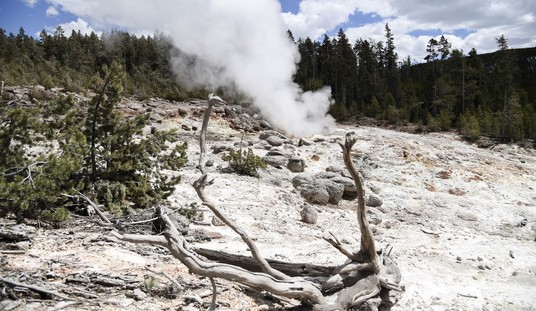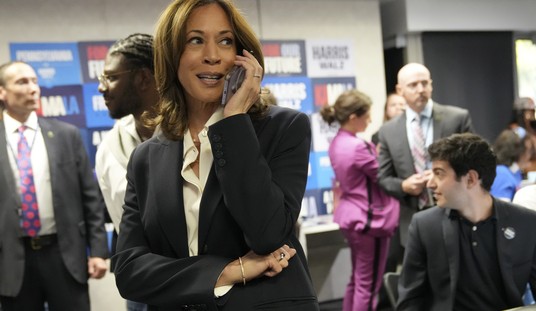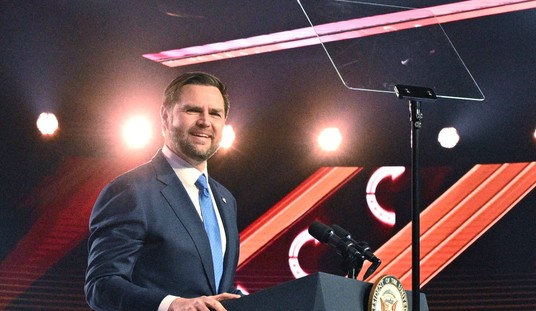
Is “electability” a meaningless term? It is certainly an overused one, and overused words tend to lose their meaning even when they have something to tell us. In Part I, I looked at “electability” candidates in past Republican presidential primaries. But if we look at recent presidential, Senate and Governor’s races, we can get a better fix on what kinds of candidates win and lose in the 17 states that represent the outer limits of “swing states.” A lot of things matter in contested elections, notably the national political environment. But like it or not, good candidates is one of the things that matter. They may be conservatives or they may be moderates, and in a few cases in blue states they may even be liberal Republicans, but the answer for conservatives is not to ignore electability entirely but to develop and support conservative candidates who are winners.
One way we can do that is by running candidates with proven experience, as they tend to be less likely to make the mistakes that kill inexperienced candidates. As I noted in Part I, it is mostly a myth that the GOP has repeatedly nominated moderate losers in presidential contests because voters somehow got talked into thinking their opponents were too conservative; it has more typically been the case that we have nominated moderates because conservative opposition was divided or marginalized in the absence of a good conservative alternative, and our contested races have often been between two relatively moderate Republicans. That’s what’s so unusual about 2016, in which the voting begins with two viable and talented conservatives in the race (Ted Cruz and Marco Rubio) and real questions about the viability of any of the moderate (Christie, Kasich) and/or establishment (Jeb) candidates.
To complete the picture of electability, let’s look at the statewide races going back a decade, to 2006, the start of the current post-Bush-coalition political era, ranking statewide winners and losers by their percentage of the vote.

Ohio
As I’ve noted before, Ohio has been relentlessly just slightly more Republican than the nation, and for some years now it has been a haven for moderate Republicans, much to the frustration of Ohio conservatives. The three elections won by the GOP in Ohio have been behind the moderate John Kasich and the slightly more conservative, but very staid and establishment, Rob Portman. Both were good fits for Ohio, highly experienced and well-known and seen as sober and “reasonable” by swing voters. Neither was an excite-the-base guy, which is one reason the huge margin of Kasich’s 2014 win was mostly the product of depressed Democratic turnout. Romney ran better in Ohio than McCain, but still not that close; conservative Senate candidate Josh Mandel, a bright guy but young and somewhat green on the trail, ran 2.5 points behind Romney in 2012. The Ohio GOP got destroyed in 2006 due in good part to the state-level “Coingate” scandal, but conservative firebrand Ken Blackwell still ran 7.1 points behind establishment incumbent Mike DeWine.
Republicans in years further in the past have won Ohio with conservatives, and certainly the moderate Romney and McCain campaigns failed here, but nobody in the past decade has figured out how to win it with a populist or Tea Party message. Nor has there been a really serious primary in the state since Blackwell’s victory over Attorney General Jim Petro, a race that left lingering doubts over whether moderate Ohio Republicans really wanted Blackwell to win.
Let’s add to the picture a chart for these swing states of the percentage of eligible voters who voted for the GOP in 2004, 2008 and 2012, as explained previously in this post, with the states ranked from smallest to largest dropoff in GOP votes from Bush to McCain/Romney:

Ohio is better territory for low-key Republicans than fire-breathers. But the serious dropoff in GOP turnout for Romney and McCain compared to Bush in 2004 suggests that a lack of enthusiasm can be a serious problem in Ohio.
Florida
Charlie Crist’s convincing 2006 win was the last Republican majority in Florida, which he accomplished by running left in a terrible year for the party. Rubio, while running in a better GOP year, arguably had the more impressive win when you consider his 20-point margin over Crist in a 3-way race (Harry Enten at 538 noted that Rubio’s margin of victory was greater than you would have projected under the circumstances). Between Rubio and Rick Scott, Florida has been fertile territory for Tea Party conservatives, albeit two different approaches – Rubio’s an eloquent political veteran, Scott a businessman who at times has been his own worst enemy on the trail – and both of them beat Crist. Romney and McCain both ran close-but-no-cigar in Florida. By contrast, both the stale establishment Connie Mack and the hard-edged Katherine Harris got bulldozed by Bill Nelson.
Rubio, Scott and Harris all faced electability questions in their primary races, and obviously the first two dispelled all doubters on Election Day, while Harris was a disaster (she was abandoned by the state party – Jeb Bush, then the sitting governor, campaigned with Crist but not Harris) and has never run for office again.
Florida is a big, diverse and querulous state with more than one path to victory. Since the start of presidential primaries in 1976, every winner of the Florida primary has won the GOP nomination, every GOP candidate that lost Florida has lost the election, and every GOP candidate that won Florida has won the election except for George H.W. Bush in 1992. But Rubio and Scott have proven in recent years that being a real conservative is no bar to carrying the Sunshine State.
Virginia
Few state Republican parties have blown more close races or endured more internal squabbling than the Virginia GOP, whose only major statewide win in the past decade was behind a man who is one Supreme Court case away from having to report to federal prison. In 2009, McDonnell was a fairly classic conservative/establishment “electability” candidate – tall, handsome, smooth-talking, an apparently rock-solid social conservative without a ton of hard edges who could unify the party – and the formula worked, as he annihilated the unfortunate Creigh Deeds. As it turned out, McDonnell was a mediocre governor without a lot of backbone or character.
The other candidates to lose close races in Virginia have tended to be cut from similar cloth in some ways, especially Romney, but also Ed Gillespie, a classic creature of the GOP establishment who might well have won if his race hadn’t been written off until the last week. George Allen was a highly successful politician in pre-2006 Virginia but was past his expiration date for a variety of reasons and gaffed his way out of office. Jim Gilmore had the worst showing of any semi-serious GOP Senate candidate in any of the closest swing states discussed here.
The most controversial Virginia nominee in recent years was Cuccinelli, whose race went badly compared to the others. It’s not so much that Cuccinelli was too conservative for Virginia as that he was too strident, picking too many hot-button fights too loudly in ways that made him easy to caricature as an extremist. He also had the misfortune of running at the peak of voter dissatisfaction – especially in Northern Virginia, where many federal employees live – with the 2013 government shutdown, dissatisfaction that had long since dissipated by 2014. While Cuccinelli was supported by national Republicans (he received fairly extensive support from the RGA), he also suffered from a divided party in which sore primary loser Bill Bolling remained bitter and threatened to run third party and his partisans sniped at Cuccinelli at every opportunity. And Cuccinelli does not seem to have had much of a well-organized ground operation. Even so, like Gillespie, he made a late charge at the end.
It’s not clear that the demographics and economics of Virginia allow the McDonnell win to be recreated now (although the state is more competitive when Obama is not on the ballot to juice African-American turnout). But it seems clear that the biggest challenge in winning Virginia is keeping the state party’s fractious factions unified.

North Carolina
North Carolina has been very tight in presidential contests and the 2014 Senate race. Frankly the big down-ballot wipeouts of 2008 were due in good part to supercharged turnout for Obama (especially black voters), as the GOP presidential vote stayed mostly consistent from 2004 to 2008 to 2012; then again, Liddy Dole and Pat McCrory ran well behind John McCain, and Dole’s problem was pretty obviously her DC insidery Generic Republican staleness, while McCrory roared back to win handily in 2012 after unpopular Governor Bev Perdue declined to run for re-election. The NC GOP has won with some fairly colorless candidates (Tillis and Burr), but might not have won Tillis’ razor-thin race with some of the political amateurs who challenged him in the primary.
GOP turnout seems to be pretty stable in North Carolina regardless of the candidate, but that has yet to be put to the test by a particularly good or bad candidate.
Colorado
The Democrats had fantastic success “turning Colorado blue” – John Kerry got 31.6% of all eligible voters in 2004, Obama got a staggering 38.1% in 2008. And they’ve been helped by some truly catastrophic Republican infighting, peaking in 2010 when both Scott McInnis and his primary opponent Dan Maes imploded in the Governor’s race, leading to a third party run by the incendiary Tom Tancredo. Ken Buck won independents by 16 points that year and still lost the Senate race, in part due to a weak showing with self-identified Republicans after a bitter primary against Jane Norton, and in part due to turnout problems created by the debacle in the Governor’s race. Buck was and is a good conservative, now a freshman Congressman, but he accumulated a number of statements on the trail that played into the “war on women” narrative, and suffered a big gender gap.
Cory Gardner picked the Democrats’ lock narrowly against a furious effort to re-run the “war on women” playbook (the Democrats literally ran ads claiming his election would lead to outlawing contraceptives). He managed that, in a year when stolid retread Bob Beauprez couldn’t quite win, by being a smooth, charming young guy who deployed a counter-strategy developed by Bobby Jindal of advocating over-the-counter sales of the birth control pill. We still don’t know how Gardner did with Hispanic voters, since the networks inexplicably refused to release that line on the exit polls.
The CO GOP has a lot of very conservative elements, and there may be an opportunity somewhere to recreate Bush’s big exurban evangelical turnout in the state, but for now it looks very much like a state where a conservative base can’t win unless it has a candidate who neutralizes wedge issues that scare off female voters and boost Democratic Hispanic turnout.
Iowa

Fossilized establishment moderate Republicans may be failing in a lot of places, but Iowans still love Chuck Grassley and Terry Branstad – a lot more than they liked Romney or McCain. Joni Ernst’s 2014 win shows that a charismatic younger conservative can win in Iowa, in her case with help from being a military veteran, a woman, and not an abrasive lawyer like her opponent. The trendline is also positive for Republicans in the state, and Ted Cruz showed last week – albeit in the low-turnout environment of a caucus – that energized Iowa evangelicals can be a force to reckon with.
Iowa is a state in flux, but Republicans should be careful not to alienate the Branstad and Grassley voters.
New Hampshire
New Hampshire holds a lot of elections, and Republicans in recent years have made something of an art of losing them. They lost with a handsome, charming pro-choice Massachusetts carpetbagger (Scott Brown), with a Beltway establishment veteran scion of a New Hampshire political dynasty (John Sununu), and with a Tea Partier who ran four points behind Romney (Ovide Lamontagne) two years after losing a contested Senate primary to Kelly Ayotte.
Only Ayotte has found the winning formula, running away with her 2010 Senate race (she’ll face a tough race this year but nothing like the dire peril that faces Ron Johnson or Mark Kirk). Like the state’s current Democratic Governor (Maggie Hassan) and its other Senator (Jeanne Shaheen) and one of its two Representatives (Democrat Ann Kuster), Ayotte is a woman. She’s a moderate Republican but no liberal, having made her name in part by taking an abortion parental-notification case against Planned Parenthood to the Supreme Court. She won New Hampshire’s numerous independent voters in 2010 by a landslide margin. Ayotte comes across as a classic upper-middle-class suburban professional working mom.
New Hampshire is a challenge for Republicans these days, but Ayotte shows that a likeable Republican with some real convictions can win over its fickle voters.
Pennsylvania
Pennsylvania remains the Great White Whale of GOP presidential politics, with Romney getting close to his national vote percentage there while scarcely putting any effort into the state and its 20 electoral votes. The state GOP suffered a body blow when Rick Santorum got vaporized in 2006 after making himself too strident a social conservative for the Philly suburbs, and football hero Lynn Swann got buried in the 2006 wave. But then State Attorney General Tom Corbett and former Congressman and Club for Growth head Pat Toomey turned that around in 2010. Corbett’s Governorship was a disaster, in part for reasons related to the Penn State sex scandal, but Toomey is in pretty solid shape for his re-election race so far, and seems likely to avoid a primary challenge despite his sponsorship of the Manchin-Toomey gun bill, which won him bipartisan credibility with suburbanites.
Corbett ran as a fairly generic Republican, but Toomey’s vigorous economic conservatism led some to assume he was too conservative for the state. Yet he won handily after chasing Arlen Specter out of the party in a primary. Toomey has long had a good touch with blue-collar voters somewhat at odds with his national reputation.
In the right year, a Republican with a solid conservative platform can win Pennsylvania with the support of its rural center if he can avoid getting clobbered in the moderate Philadelphia suburbs.
Nevada

Nevada was once the sort of conservative mountain state that could elect the likes of John Ensign, but changing demographics have made that unworkable, and bomb-throwing Tea Partier Sharron Angle blew a very winnable race against Harry Reid in 2010 that she led in the polls on Election Day (in part because Angle ran a disorganized campaign without great support from the party). Greater successes have gone to much more moderate Republicans like Brian Sandoval (the state’s first Hispanic governor) and Dean Heller.
Nevada is mostly a blue state now, unless Republicans can find a way to reach the state’s Hispanics.
Wisconsin
I can sum up in two words the kind of Republican who wins in Wisconsin: Scott Walker. And Ron Johnson originally ran as somewhat similar to Walker, a blunt conservative Tea Party businessman rather than a Paul Ryan-style smooth operator. Walker’s wins, like George W. Bush’s narrow 2004 loss in the state, came in races with fairly high turnout. The Wisconsin GOP is quite conservative despite being in a “blue” state – unlike many other closely divided states, Wisconsin generally has supercharged partisan turnout and very few swing voters. You win Wisconsin with base turnout.
Georgia
Despite persistent predictions of demographic doom and a state party that is sometimes too complacent, it’s been a long time since Georgia Republicans have lost a statewide race. The state’s winners have tended to be establishment-conservative types, and as in North Carolina, the same voters tend to turn out no matter who is on the ballot. That said, the Georgia GOP may have dodged a bullet in 2014 by picking the “electable” if unexciting David Perdue over some of his more volatile primary opponents, devoted conservatives though they are.
Georgia Democrats got wiped out so badly with white voters (and were so weak with Hispanic voters) in 2014 that their African-American base didn’t matter. Bluntly, the racial divide in Georgia politics isn’t going away, and for now it gives Republicans an advantage just as exists in less competitive states like Alabama and Mississippi.
Missouri

Missouri, seen as a swing state during the Bush years up through the 2006 dumping of Jim Talent (a wonky but otherwise standard-issue foreign policy-oriented establishment conservatives), has snapped back in 2010-12 due to the huge unpopularity of Obamacare, although pre-Ferguson that did not help Republicans at the gubernatorial level. Both Romney and establishment Republican Roy Blunt won easily here. The glaring exception was the now-infamous Todd Akin, who proved exactly how small the social conservative base could be if you frightened off everyone else. Had Republicans picked either Akin’s establishment opponent (John Brunner) or his Tea Party opponent (Sarah Steelman), they might well have defeated Claire McCaskill on Romney’s coattails.
Missouri will reward conservatives if they don’t say something really stupid.
Arizona
Arizonans like their politics a little rougher, and take the border seriously enough to re-elect Jan Brewer after one of the worst debate disasters in memory, yet John McCain remains popular at home. Jeff Flake, a clean-cut economic conservative who is a little more McCain than Brewer on immigration, squeaked out a win in a bad Senate environment in 2012.
You don’t need to be mild or moderate to win in Arizona, and it helps to show its voters some spine.
Minnesota
Minnesota elections are often won below 50%, due to stubborn third-party leftists. Moderate incumbent Norm Coleman was robbed in the 2008 recount there, while mild-tempered Tim Pawlenty got re-elected in 2006. Like Walker and much unlike business magnate Mike McFadden, T-Paw ran on his working-class roots. There’s surprising pockets of strength for conservatives in Minnesota (think: Michele Bachmann; Romney didn’t run so badly here), but it’s a more natural fit for moderates, and a good candidate needs to find a way to connect with blue-collar white voters.
Indiana

Indiana is a state Republicans have to work at losing, but both John McCain and Richard Mourdock were up to the task, in Mourdock’s case due to a poor debate answer that made him collateral damage of the Akin fiasco as well as bad feelings from the Lugar camp after Mourdock’s primary win. But the state’s voters have rewarded a variety of different types of Republicans, from the moderate statemanlike Lugar to the wonky Mitch Daniels, the conservative Pence, and the warmed-over out-of-mothballs Dan Coats.
Michigan
Businessman and “one tough nerd” Rick Snyder is the only Republican in recent years to figure out Michigan; a distant second in votes there was Romney, who had deep roots in the state George Romney once governed. Foreign policy-focused Congressman Pete Hoekstra got massacred there in 2012, as did Terri Lynn Land in 2014, a candidate who was so bad at public appearances that she essentially spent most of the campaign hiding from public attention. Snyder is a bit more moderate than Rick Scott, but has similarly marketed himself as a business Mr. Fix-It. This is another Midwestern state where blue-collar appeal is more crucial than ideology.
New Mexico
Republicans have been sinking badly in New Mexico at the national and Senate levels – 30.1% of the state’s eligible voters voted for Bush in his surprise 2004 win of the state, but that had plunged all the way to 23.5% by the time we got to Romney, due to a combination of hemorrhaging Hispanic votes and the overall dropoff of voter turnout in the state. The exception has been moderate Mexican-American Governor Susanna Martinez, who put her endearing “how I discovered I was a Republican” spiel on display at the 2012 convention, helping herself but not Romney.
The most important element of a GOP campaign in New Mexico is appeal to Hispanics in the state with the fewest white voters in the country.
Conclusion
There are clearly different recipes for picking candidates suited to each of the competitive states. But some individuals do stand head and shoulders above others in their states, and they tend to have some common characteristics – candidates who are younger, better-spoken, less abrasive, perhaps “diverse” and/or attractive and/or personally impressive; candidates with the common touch in one way or another; candidates who have an identifiable conservative appeal on one or more issues but present more difficult targets for the usual Democratic campaign to paint them as heartless zealots. Ayotte, Toomey, Gardner, Ernst, Walker, Martinez, Snyder, Rubio, Scott, McDonnell, Sandoval…their approaches are not all the same, and that presents challenges in defining “electability” across a national election, and not all of these candidates’ electoral strength was quantifiable at the time in the polls, but you can know it when you see it, and distinguish it from candidates who are like playing with live ammunition, or are stale leftovers, or alienate important Republican constituencies on core issues, or just are not good at this. Another commonality is that, while some of them (such as Rubio or Toomey) emerged from bruising and divisive primaries, they stood in a good position to unify the party’s various factions behind them, and were not themselves divisive, factional candidates.
As much as the political mood and terrain matter, the ability to connect with more voters than you alienate is a skill. Good candidates matter. We should try, when possible, to run them.













Join the conversation as a VIP Member